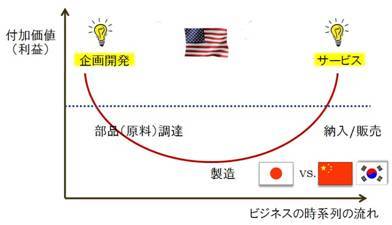STEP 1
Let's get excited together to enhance corporate value
Part 2: What Concerns Do Top Executives Have?
Three Key Concerns of Top Executives Considering Brand Rebuilding

In my role as a consultant, I often have the opportunity to speak with top executives. They all possess a remarkably high level of awareness about the issues at hand. Considering their position, this is only natural.
Here are some actual concerns I hear from top executives:
"We want to redefine what we do and win in global competition."
"We want to reexamine our current business assumptions from the customer's perspective and shift to brand-centric management."
"We want employees to take ownership of management challenges and build a company with top competitiveness in Japan."
And sometimes, we receive requests like this:
"We want to refresh our business strategy and polish our brand anew. Please partner with us and walk alongside us."
What executives with this problem awareness share is a profound sense of crisis about the growing disconnect between business operations and marketing. While this stems partly from the prudent management reforms implemented during the "Lost Decade," they recognize that charting future growth strategies now requires redefining and rebuilding their brand.
Re-examining their motivations reveals three key points:
First is the awareness that they want to re-examine their entire business from the customer's perspective. Until now, they operated under a "company-centric" approach, believing that if they made good products, customers would buy them. However, as markets and economies mature, this approach no longer sells.
Second, despite pursuing M&A and business model transformations to survive, the company realized that without redefining its identity and brand, it could neither build an attractive brand strategy for customers nor present a credible growth strategy to stakeholders.
And third—this is particularly crucial—while external brand building is important, companies are acutely aware of the necessity for every employee to act as an embodiment of brand value, as a brand evangelist. This is called "internal branding." The "personalization" mentioned earlier in the executives' voices is precisely this issue of internal branding (explained in detail in STEP 4). The underlying premise is that each employee's actions are part of the customer's brand experience—they are the very touchpoints with the customer.
Considering Business Management and Marketing as an Integrated Whole
A conceptual diagram illustrating the relationship between added value (profit) in corporate activities and the chronological flow of business is known as the "Smile Curve."

The horizontal axis represents the business process stages: planning/development, parts (raw material) procurement, manufacturing, delivery/sales, and service. The vertical axis shows the degree of added value (profit) generated at each stage. As shown in the right diagram, this forms a smile-shaped curve. In other words, high added value is generated at the initial planning/development stage and the final service stage, while the added value is relatively low during parts procurement, manufacturing, and sales. The stage where Japanese manufacturing faces intense price and speed competition from China and South Korea is precisely the manufacturing stage—the very bottom of this curve.
Conversely, leading companies in sectors like America's IT industry firmly control both the initial planning and development stage and the final service stage, reigning as high-value-added enterprises.
What is now required for Japanese companies to grip both ends of this smile curve? The solution lies in redefining and rebuilding their brands. Top management, driven by a sense of crisis, strongly embraces this awareness. They keenly feel the disconnect between business operations and marketing, recognizing the need to think holistically and seamlessly.
The role of achieving this "end-to-end" integration falls to the brand. By thoroughly re-examining brand strategy, the framework for pursuing sustainable growth becomes visible. Supporting this process is our role.




